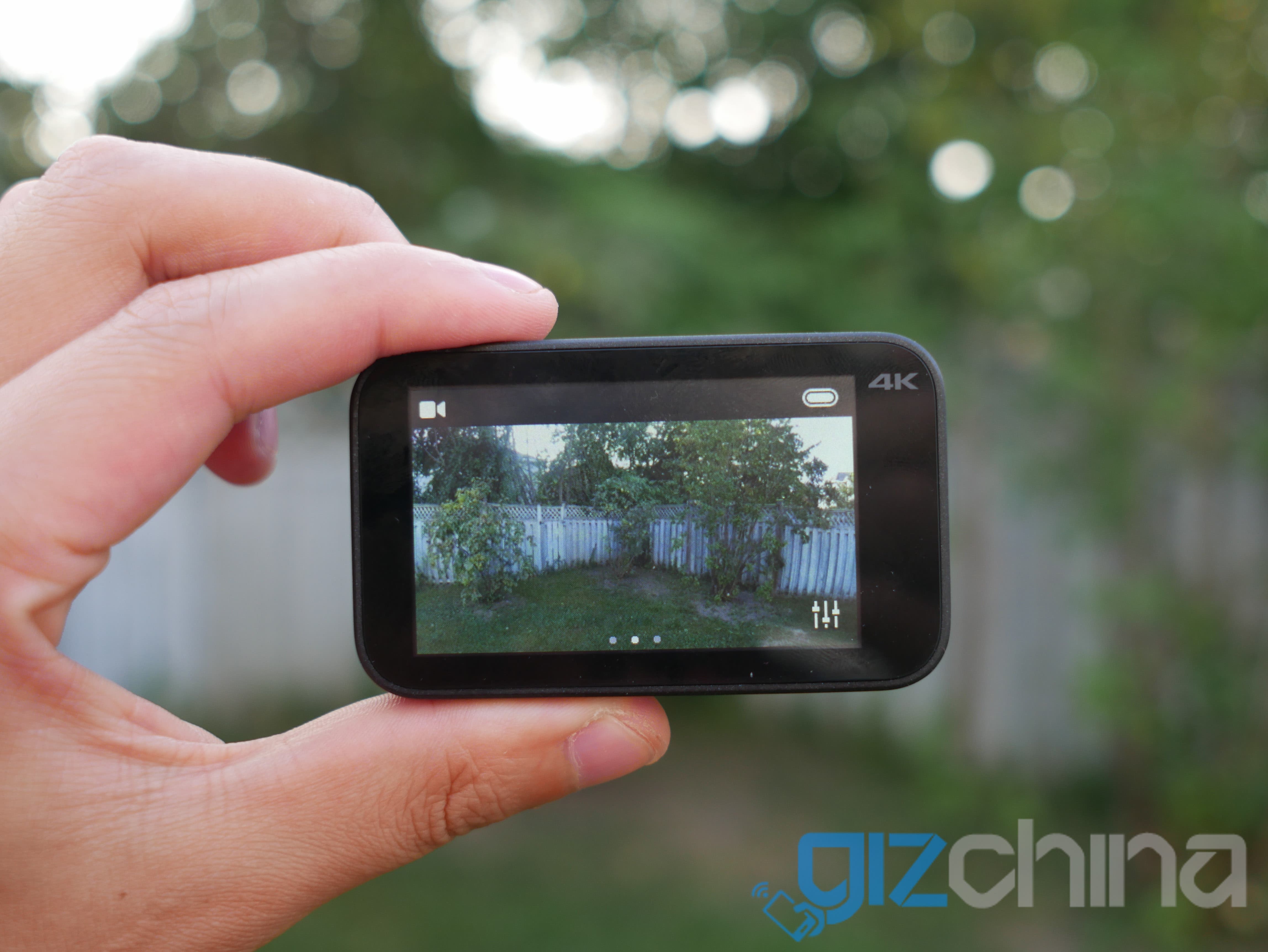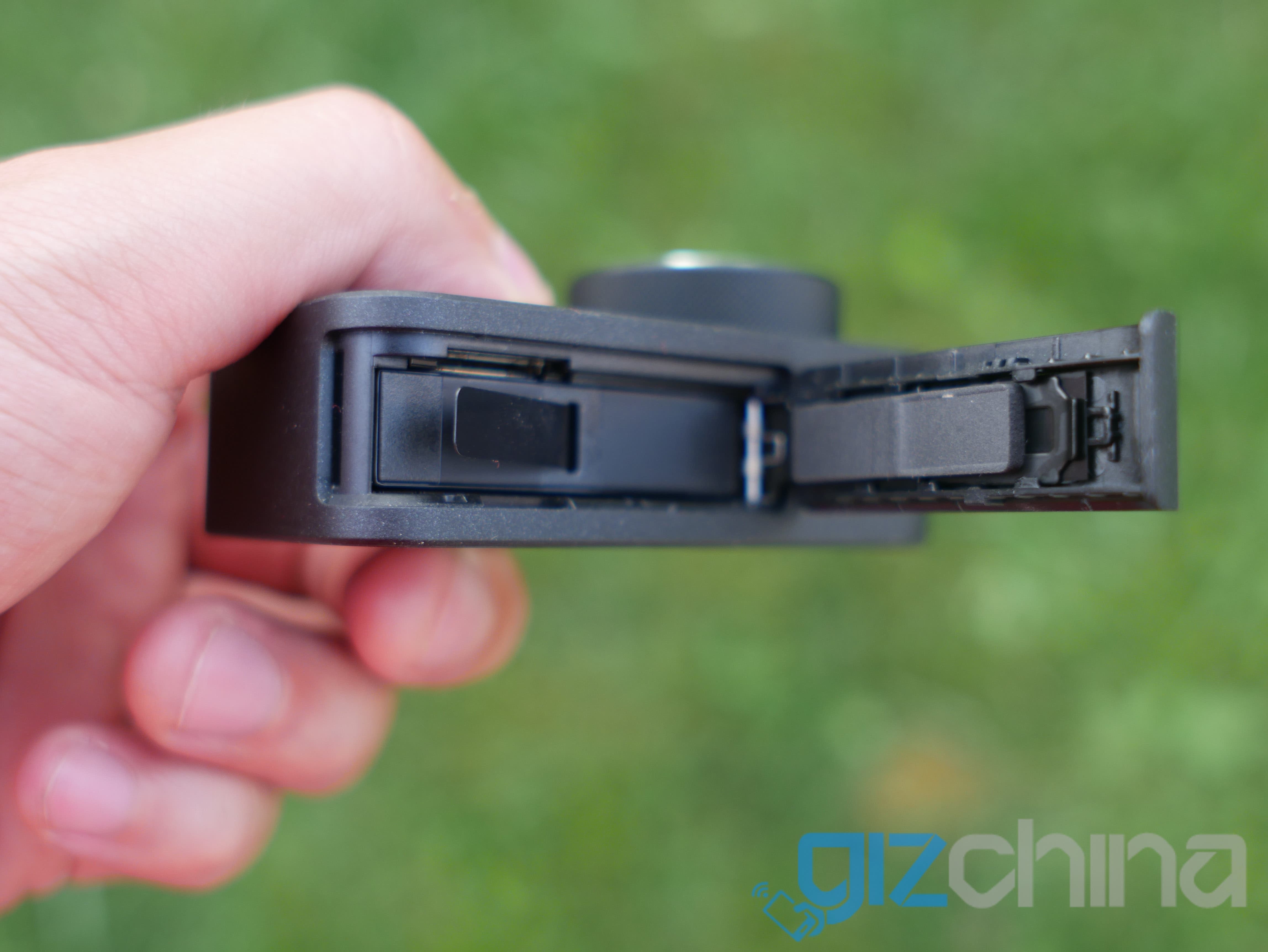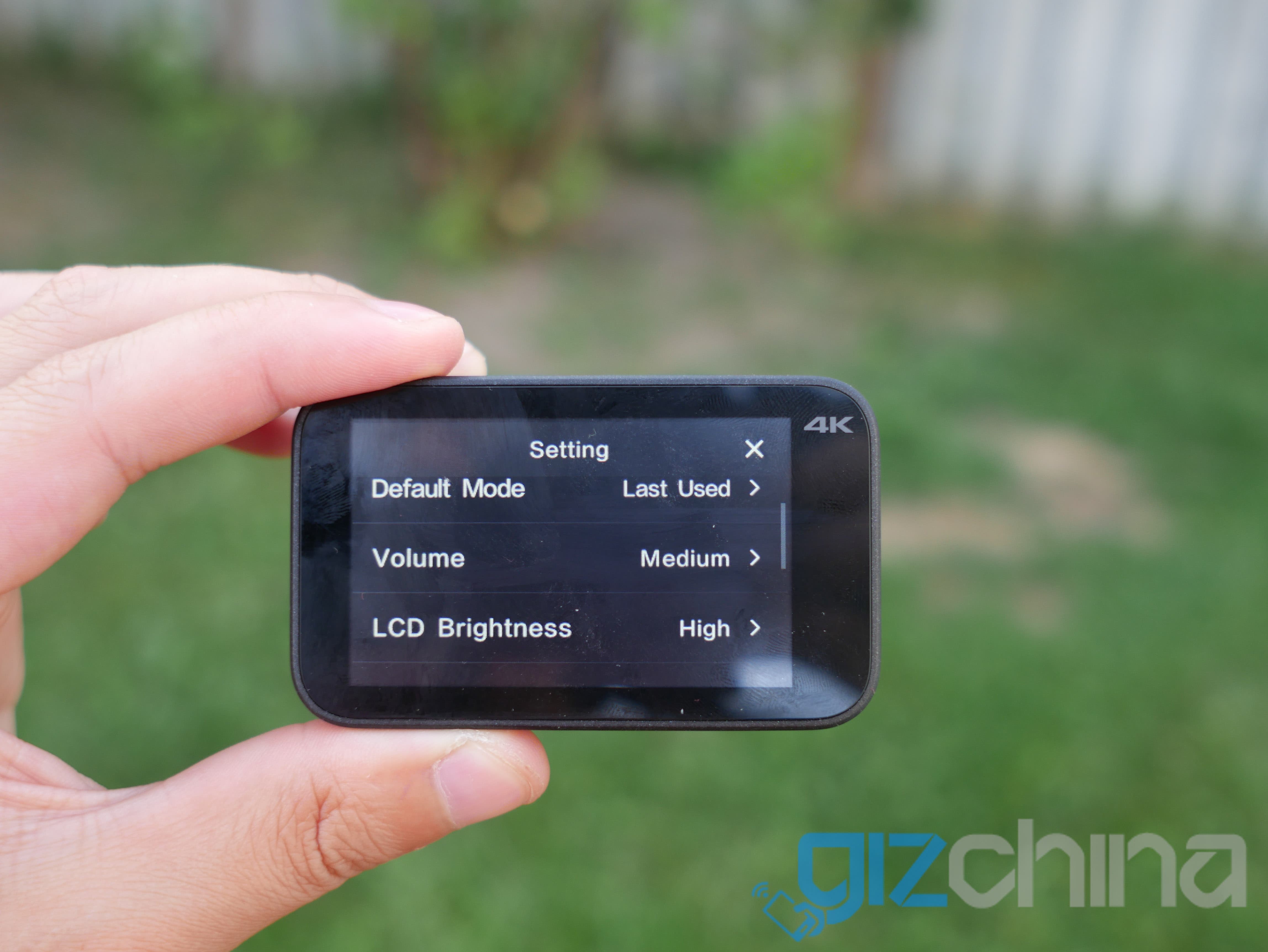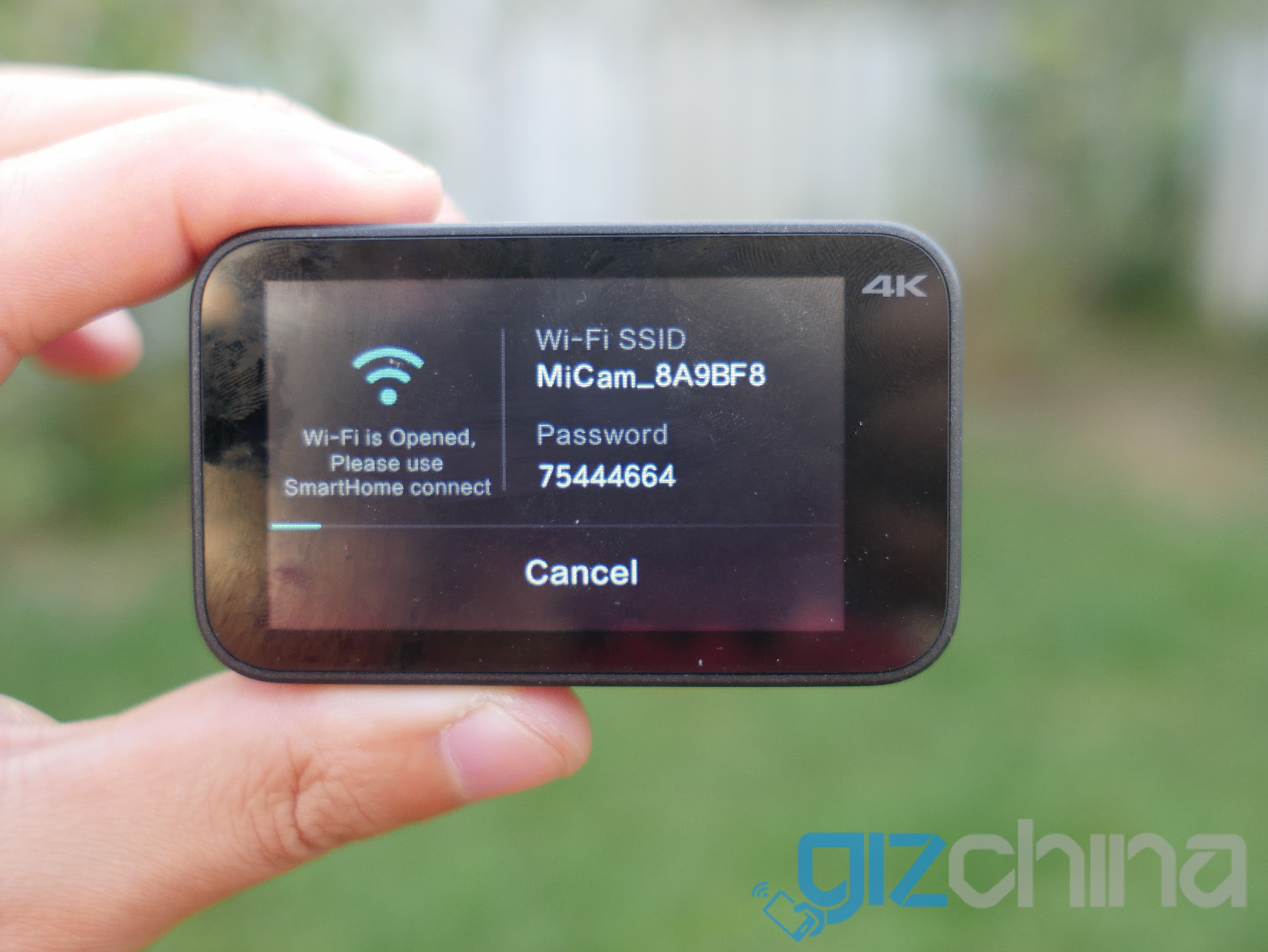Xiaomi MiJia Mini 4K Action Camera Review
I don’t understand what Xiaomi’s strategy is here, allowing Mijia to create their own action camera when that has traditionally been the domain of Xiaoyi, Xiaomi’s dominant action camera arm. While this could present issues of cannibalization between both companies, its great for consumers such as us, more choice is never a bad thing.
The Mijia Camera Mini is a 699RMB ($106USD) action camera that is capable of shooting true 4K, making it instantly one of the cheapest 4K action camera options out there. Granted, those who live outside of China are faced with higher prices from resellers (around $115USD), but that still represents one steal of a deal, assuming Mijia gets this right.
The Mijia Camera Mini is a 699RMB ($106USD) action camera that is capable of shooting true 4K, making it instantly one of the cheapest 4K action camera options out there. Granted, those who live outside of China are faced with higher prices from resellers (around $115USD), but that still represents one steal of a deal, assuming Mijia gets this right.
Mijia Camera Mini Specifications
| Processor | Ambarella A12S75 |
| Display | 2.4″ LCD 960×480 |
| Lens | 7 Glass Lens |
| Sensor | Sony IMX317 |
| Recording Modes | 4K 30fps, 1080p 100fps, 720p 200fps |
| Aperture | f2.8 aperture, 145 degree FOV |
| Battery | 1450mAh |
| Physical Dimensions | 7.15 x 4.27 x 2.95 cm, 99g |
Big thanks to Gearbest for providing this review unit.
Mijia Camera Mini Hardware
The body of the camera is made out of sandstone, albeit smoother sandstone than what you find on the Oneplus One. It feels solid and doesn’t show smudges at all. However, I wonder how easy it would be to clean the sandstone if it got dirty. The front of the camera is made of soft rubber with the lens housing made out of metal, the Mijia is definitely one solid little bugger.
Apart from the build, the action cam is fairly minimalistic. There is an LED on the front, power/record button and mic on the top, and a microUSB port on the side that can be covered. On the bottom, the battery and MicroSD compartment. Do note that officially this action cam supports up to a 64GB microSD card, and mine does work, however I’m not sure if it supports 128GB/256GB microSD cards.
Apart from the build, the action cam is fairly minimalistic. There is an LED on the front, power/record button and mic on the top, and a microUSB port on the side that can be covered. On the bottom, the battery and MicroSD compartment. Do note that officially this action cam supports up to a 64GB microSD card, and mine does work, however I’m not sure if it supports 128GB/256GB microSD cards.
There is no waterproof case accompanying this camera and neither are there any official cases for purchase, meaning you have to wait before using it underwater or in rain.
Mijia Camera Mini Display
 The display is a retina 2.4″ LCD with a resolution of 960×480, which works out to around 441ppi, definitely high enough to quality as a retina display. Quality wise the screen is nothing to write home about, colours are reproduced merely adequately and maximum brightness leaves much to be desired, especially in bright sunlight. The touchscreen itself is fairly responsive, so no complaints there.
The display is a retina 2.4″ LCD with a resolution of 960×480, which works out to around 441ppi, definitely high enough to quality as a retina display. Quality wise the screen is nothing to write home about, colours are reproduced merely adequately and maximum brightness leaves much to be desired, especially in bright sunlight. The touchscreen itself is fairly responsive, so no complaints there.Mijia Camera Mini Battery

The camera dies after one and a half hours of 4K recording and two hours of 1080p recording at 60fps, which is in line with what other action cameras such as Yi’s and GoPro’s offerings. Charging takes about an hour and a half.
Mijia Camera Mini Software & Performance
 I wasn’t expecting English firmware on this device as it is an early unit, however I was very surprised to find the entire user interface in English. The interface works somewhat like a regular Android home screen, swipe left to access the gallery, swipe right to access video and photo options, and swipe down to access settings, WiFi and power options. The software is fairly well thought out, with many changeable settings such as EV, ISO, resolution etc. However, I could not find a setting for stabilization and am still searching for it as I did not see it anywhere.
I wasn’t expecting English firmware on this device as it is an early unit, however I was very surprised to find the entire user interface in English. The interface works somewhat like a regular Android home screen, swipe left to access the gallery, swipe right to access video and photo options, and swipe down to access settings, WiFi and power options. The software is fairly well thought out, with many changeable settings such as EV, ISO, resolution etc. However, I could not find a setting for stabilization and am still searching for it as I did not see it anywhere.Mijia has seen fit to use minimal animations on the action camera, something I dislike, as it makes the experience of navigating through the camera slow and stuttery.
 You can connect the camera to the phone using the Mi Home app, and it requires you to connect your phone to the camera’s WiFi before being presented with a simple user interface. You can remotely start and stop recordings, view photos and video, and change a few basic settings like resolution.
You can connect the camera to the phone using the Mi Home app, and it requires you to connect your phone to the camera’s WiFi before being presented with a simple user interface. You can remotely start and stop recordings, view photos and video, and change a few basic settings like resolution.Mijia Camera Mini Camera Quality
On one hand, I’m surprised how crispy the 4K footage is for such a cheap action cam, and on the other hand I expected nothing less from Xiaomi (or Mijia in this case). Suffice it to say, You can take some fairly crispy 4K footage in good lighting, with lots of detail and good colour saturation. However, compare this to more expensive action cameras and you can definitely tell that the footage is slightly softer than those devices and the iPhone 7. The Mijia records at a bitrate of 60mbps, the same bitrate as the Xiaoyi Yi 4K Mirrorless camera and the GoPro Hero 5.
Auto brightness compensation works fairly well, I found the Mijia frequently overcompensating slightly for changes in lighting conditions, but it would adjust and recompensate correctly. There is also some barrel distortion from this 145 degree lens, as you can see in the picture below. Filming moving objects does work well also, with no perceived screen tear. There is electronic image stabilization that is accomplished by using a 3 axis gyroscope and 3 axis accelerometer, and unfortunately its just about enough to stabilize any microtremors in my hand but not enough for stabilizing large movements such as walking, running, or jumping.
Auto brightness compensation works fairly well, I found the Mijia frequently overcompensating slightly for changes in lighting conditions, but it would adjust and recompensate correctly. There is also some barrel distortion from this 145 degree lens, as you can see in the picture below. Filming moving objects does work well also, with no perceived screen tear. There is electronic image stabilization that is accomplished by using a 3 axis gyroscope and 3 axis accelerometer, and unfortunately its just about enough to stabilize any microtremors in my hand but not enough for stabilizing large movements such as walking, running, or jumping.
Low light performance is poor, with plenty of noise and grain in videos and photos.
There is also slow motion, with 1080p framerates rising to an impressive and rather unconventional 100fps, 720p framerates rise to an equally impressive and unconventional 200fps. I do not recommend using 720p slowmo as too much detail is sacrificed, 1080p is the minimum resolution you should drop to.
There is also slow motion, with 1080p framerates rising to an impressive and rather unconventional 100fps, 720p framerates rise to an equally impressive and unconventional 200fps. I do not recommend using 720p slowmo as too much detail is sacrificed, 1080p is the minimum resolution you should drop to.
Photo quality is fairly decent, with good colour saturation and decent amounts of detail, but there’s only so much you can do with an 8MP sensor.








0 comments: